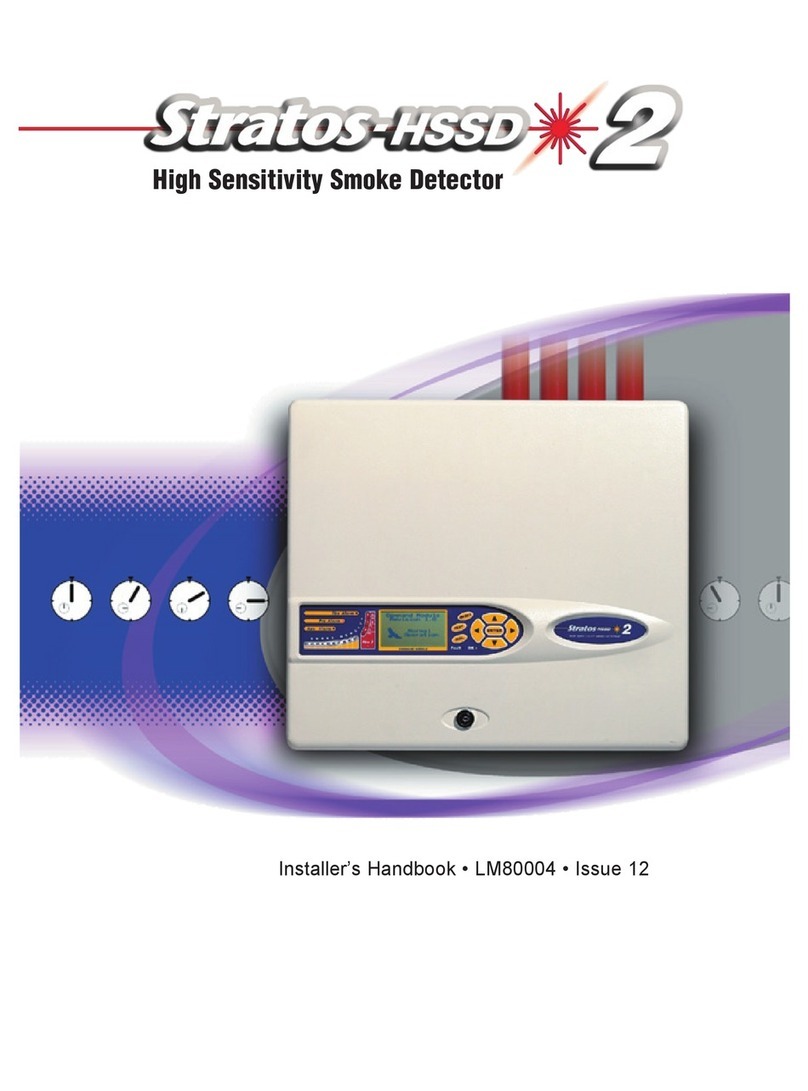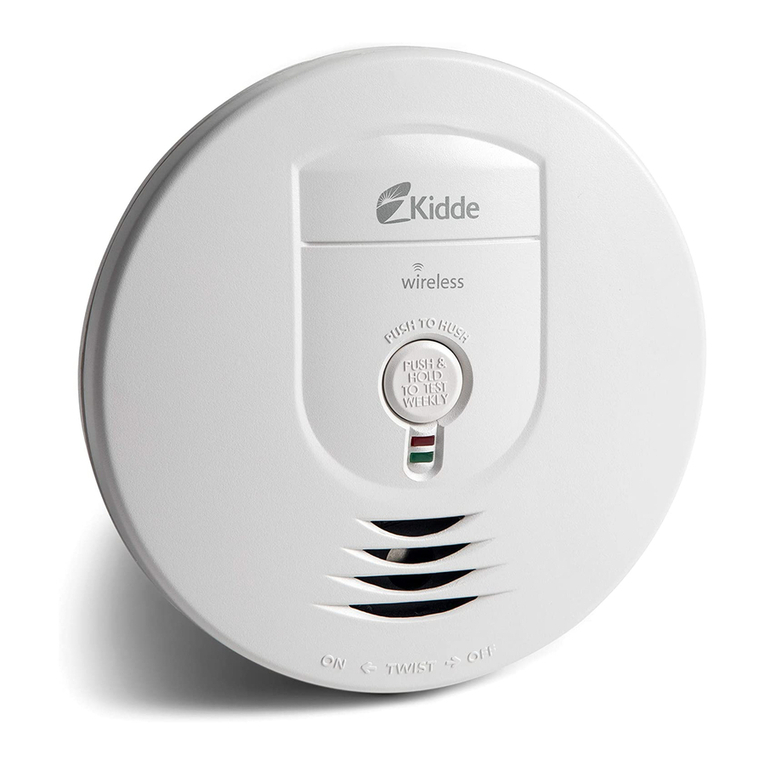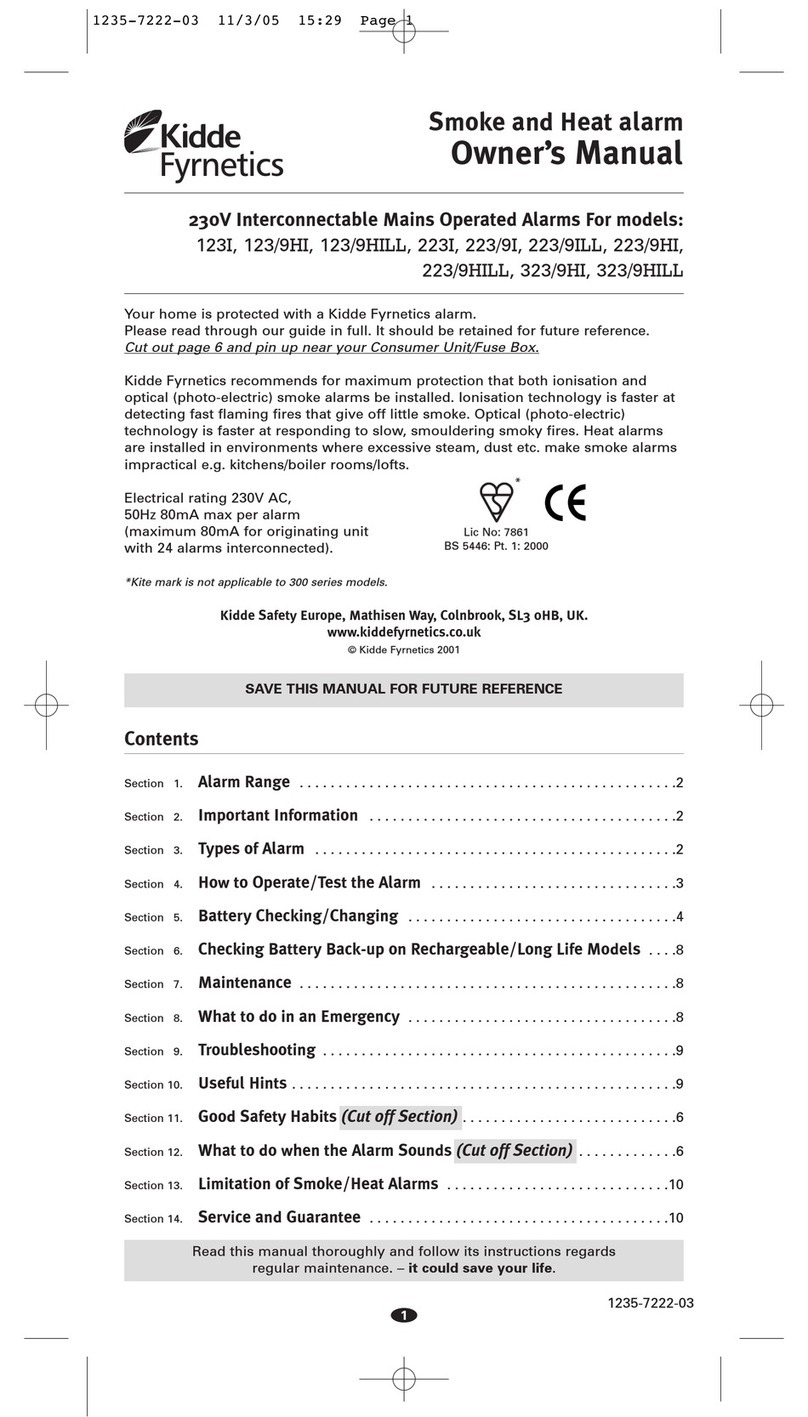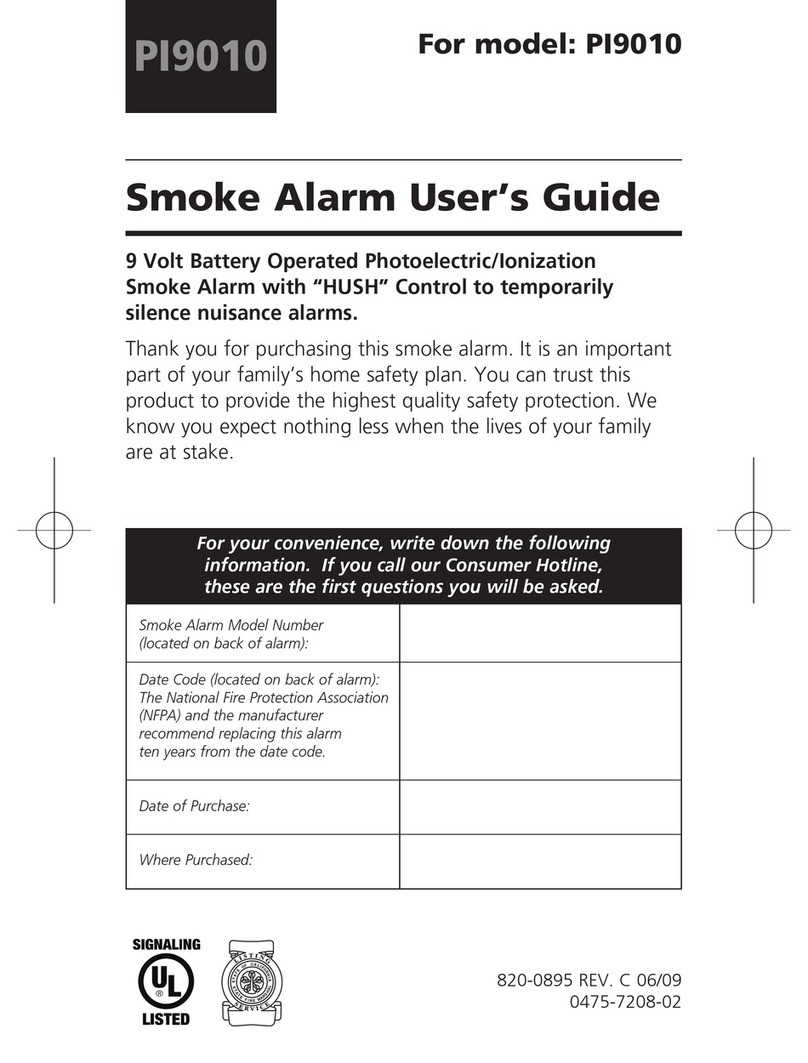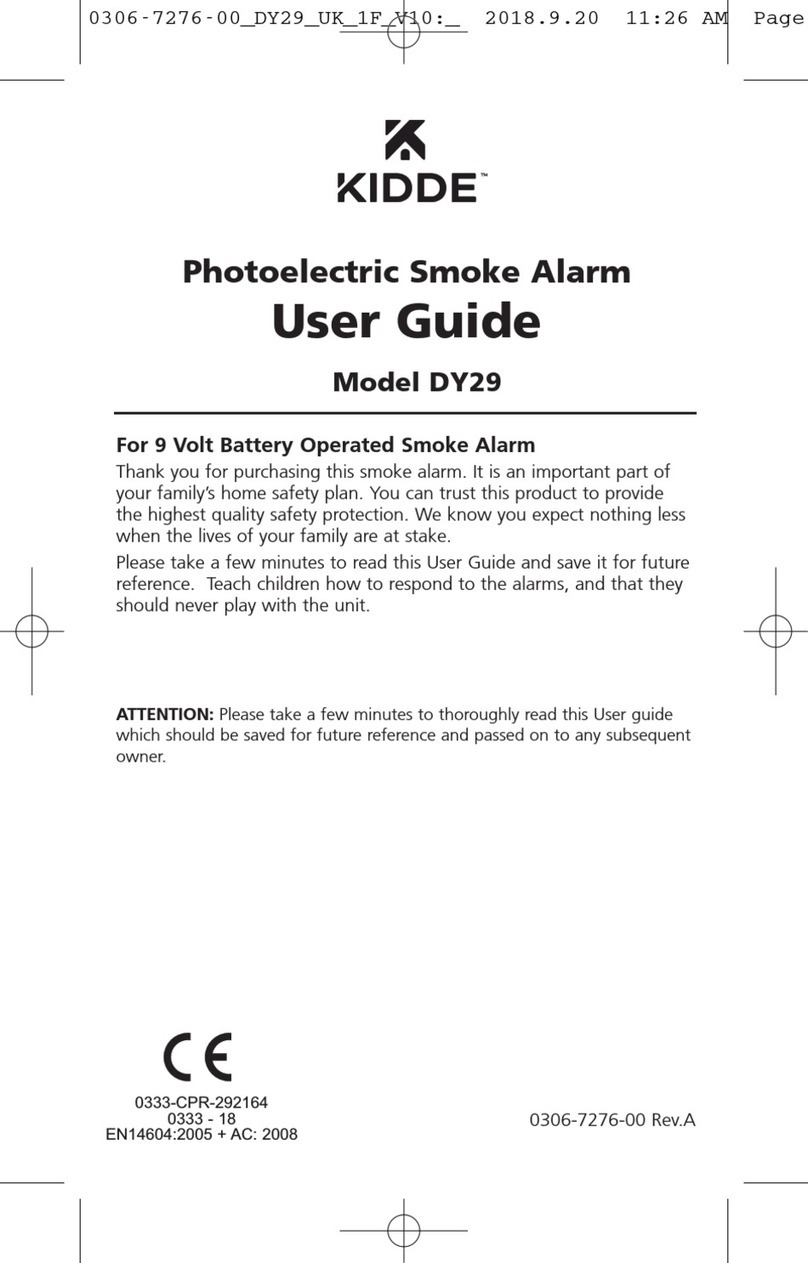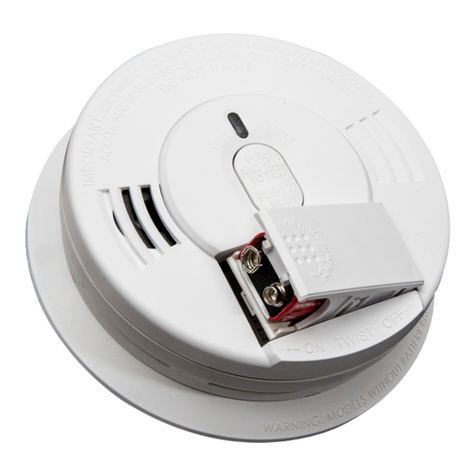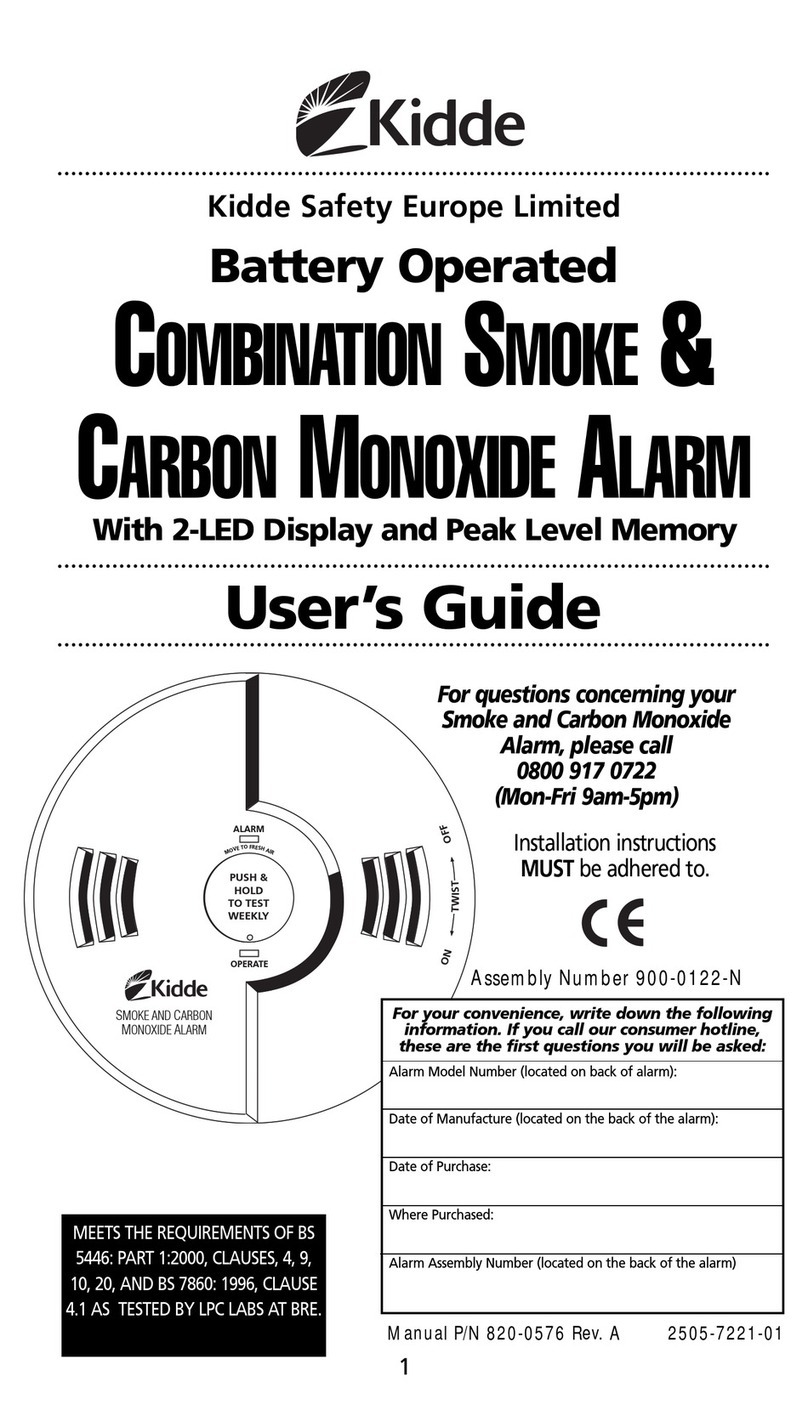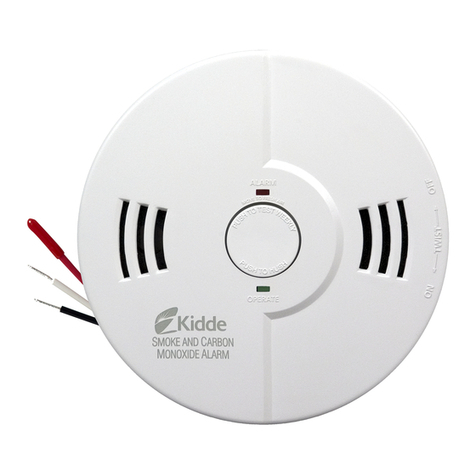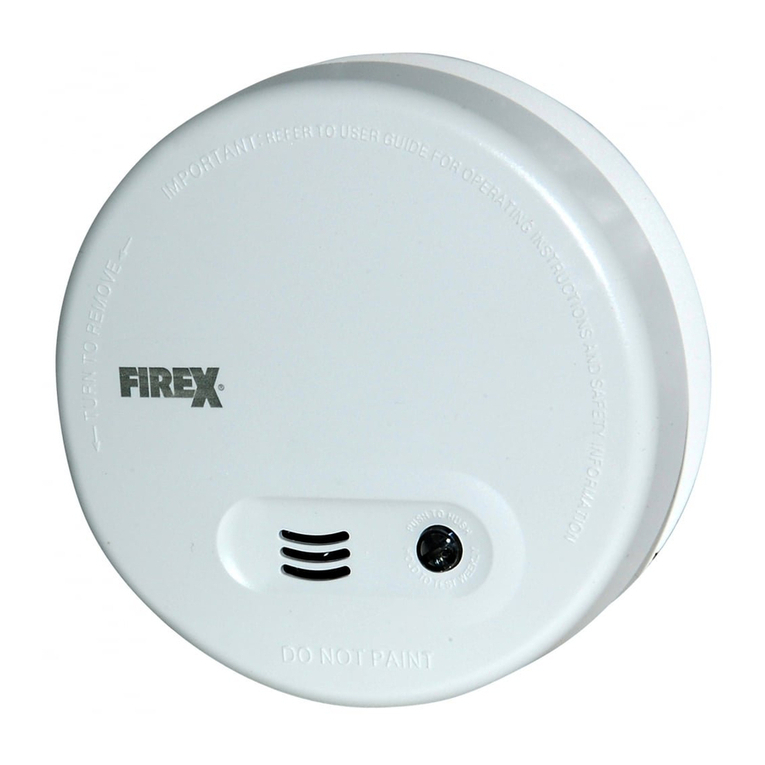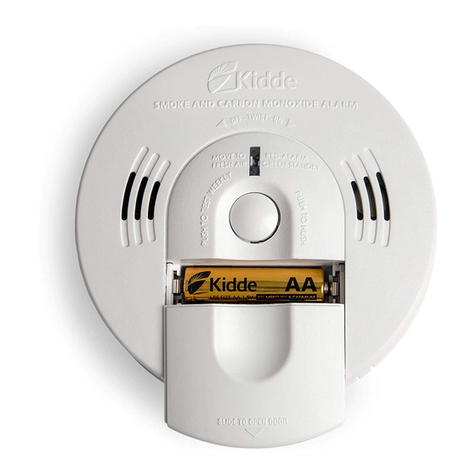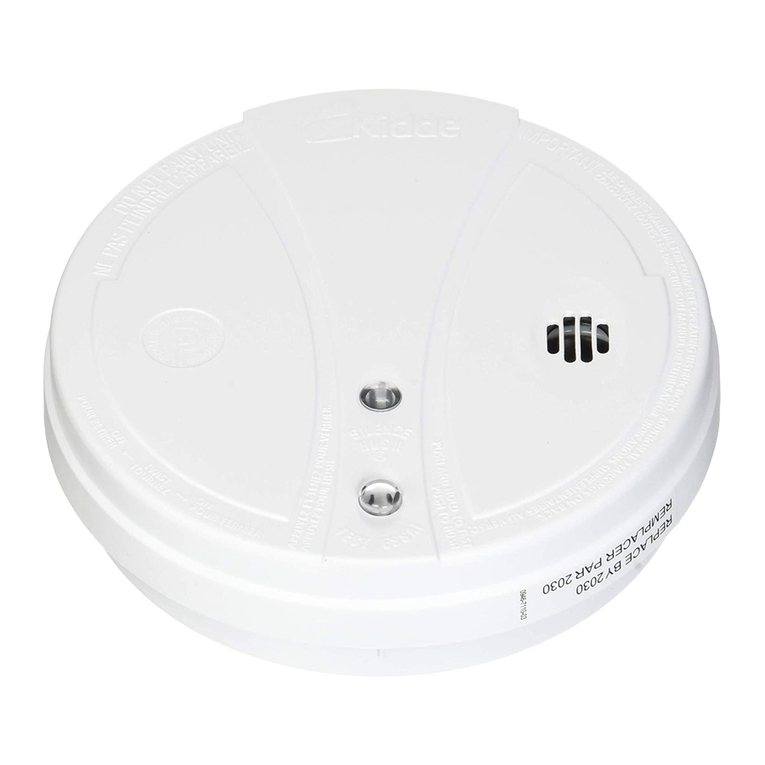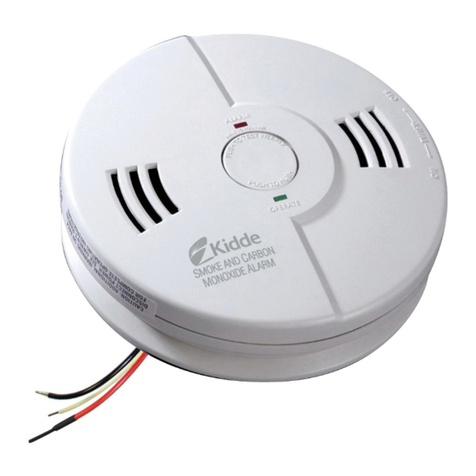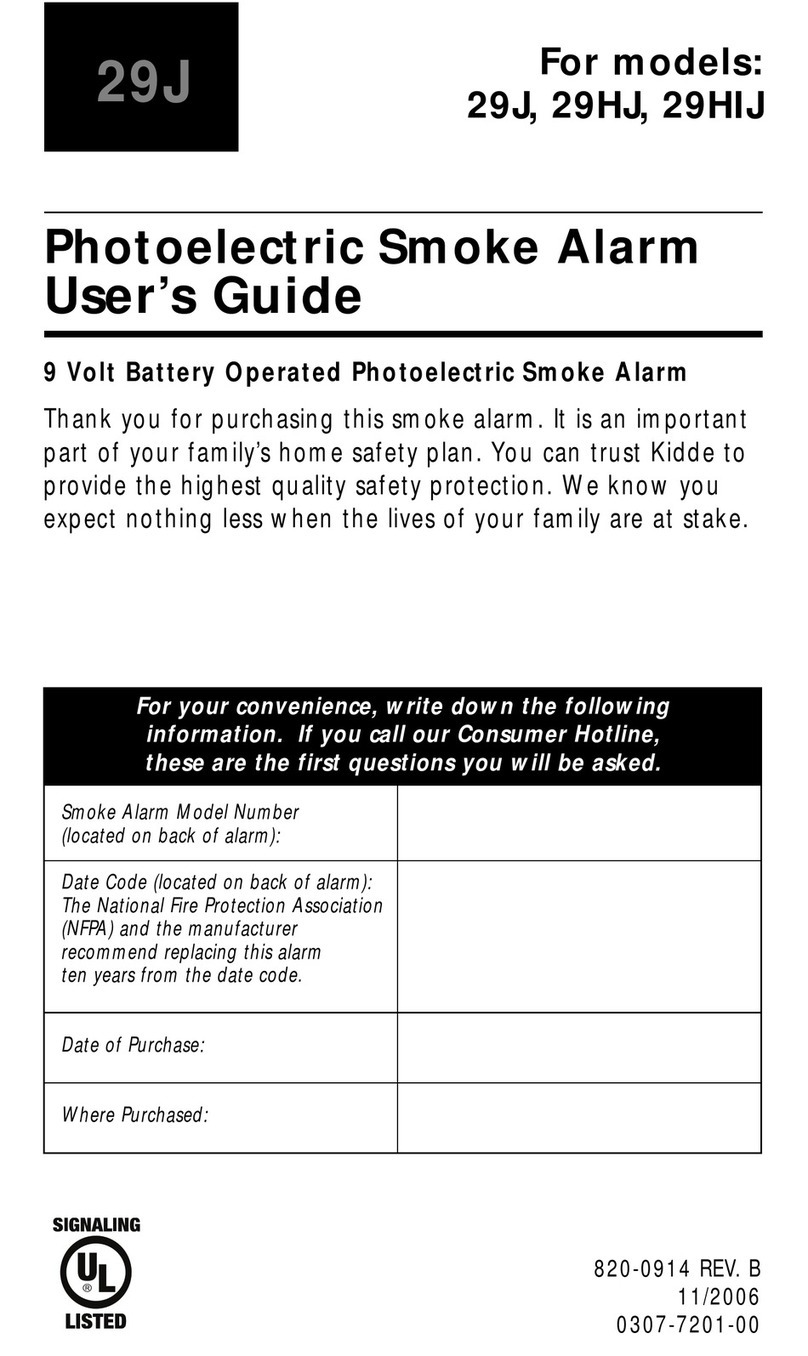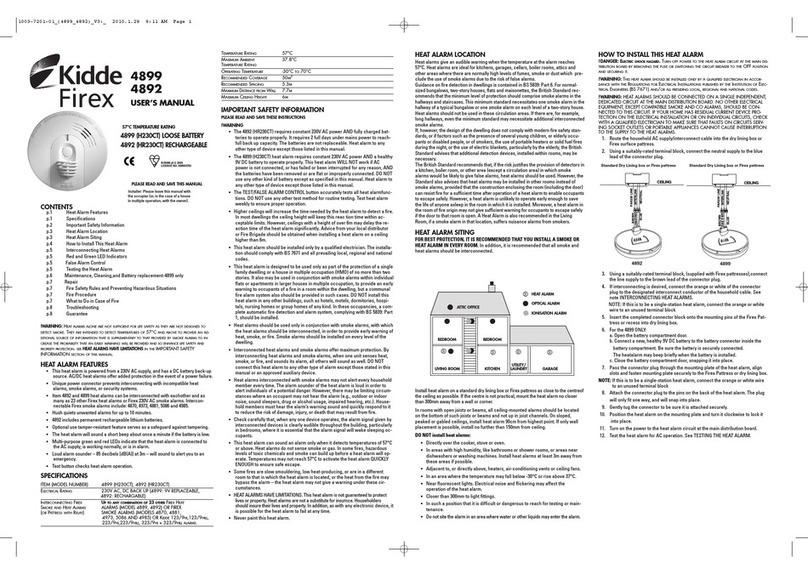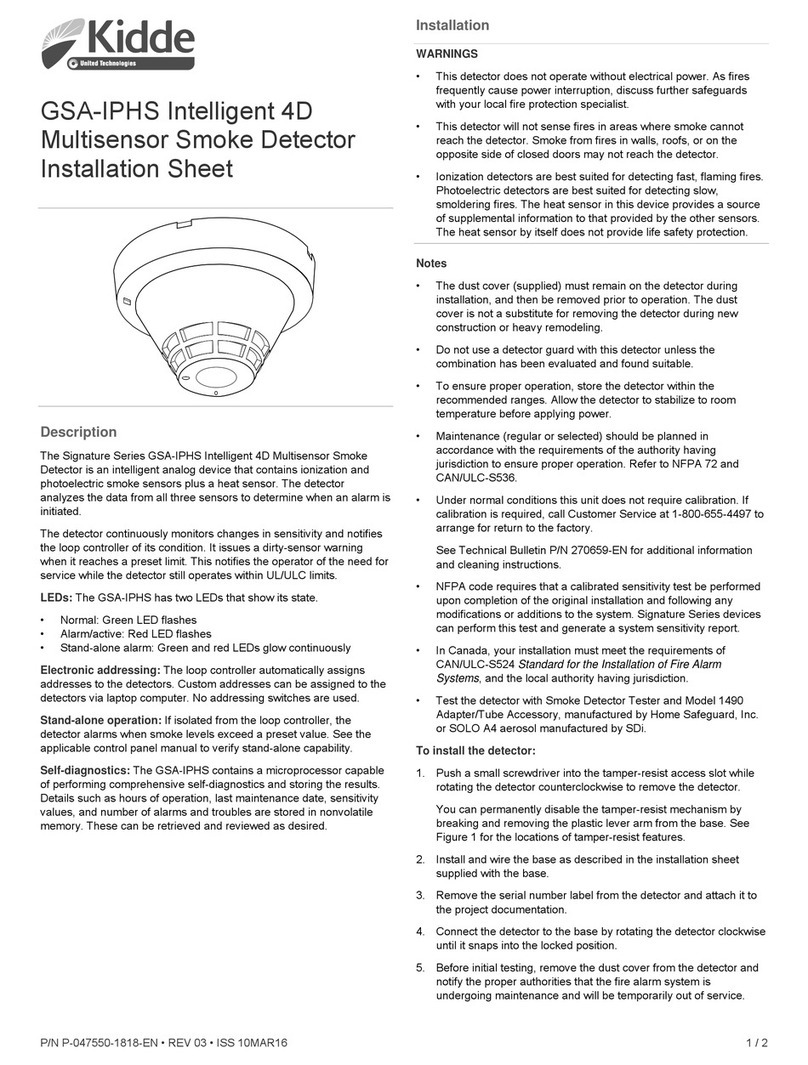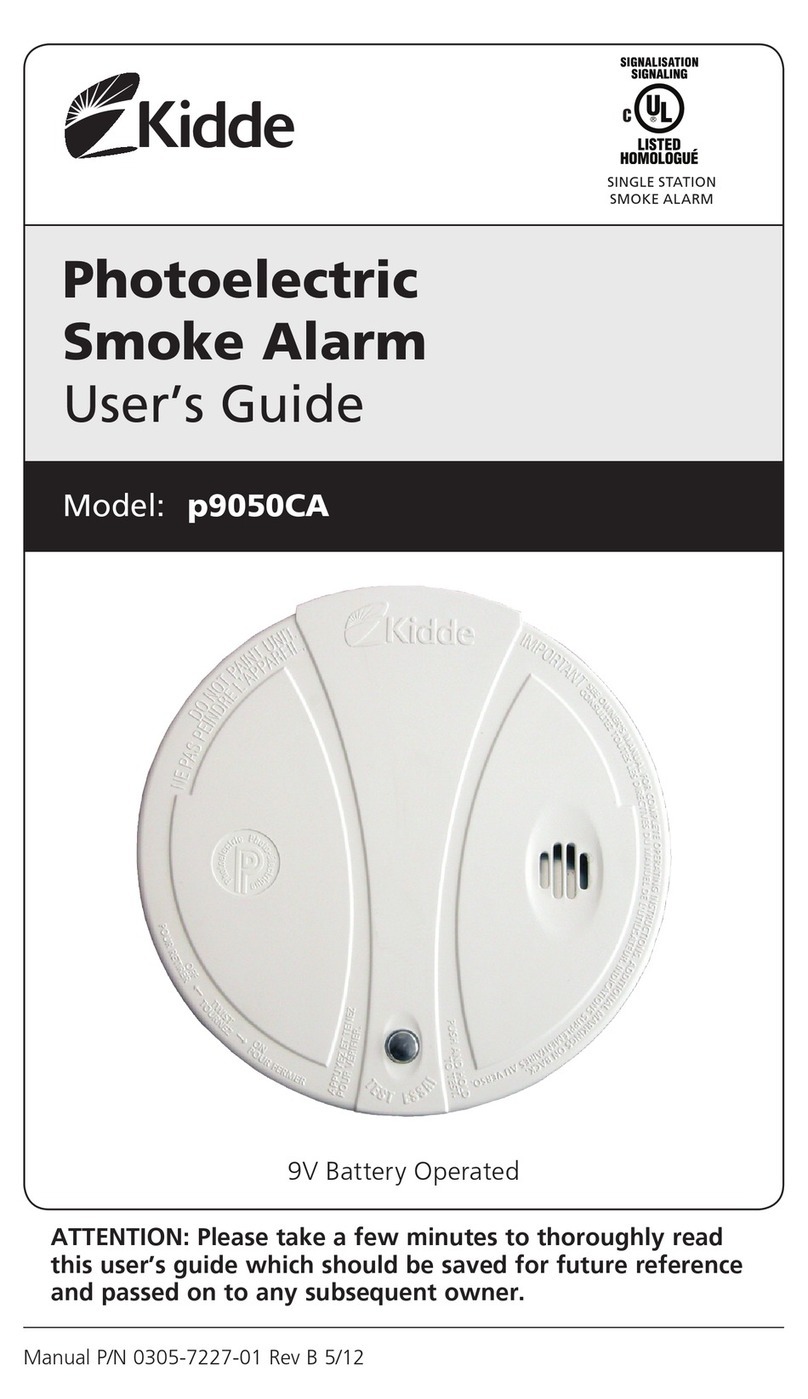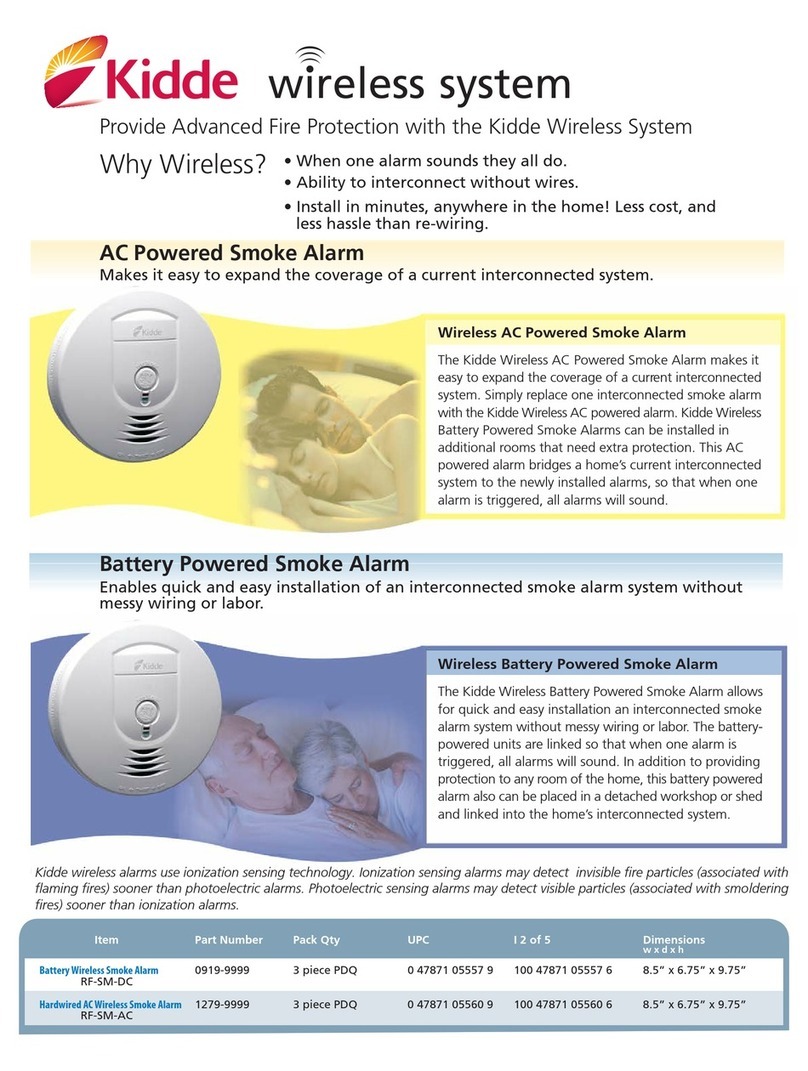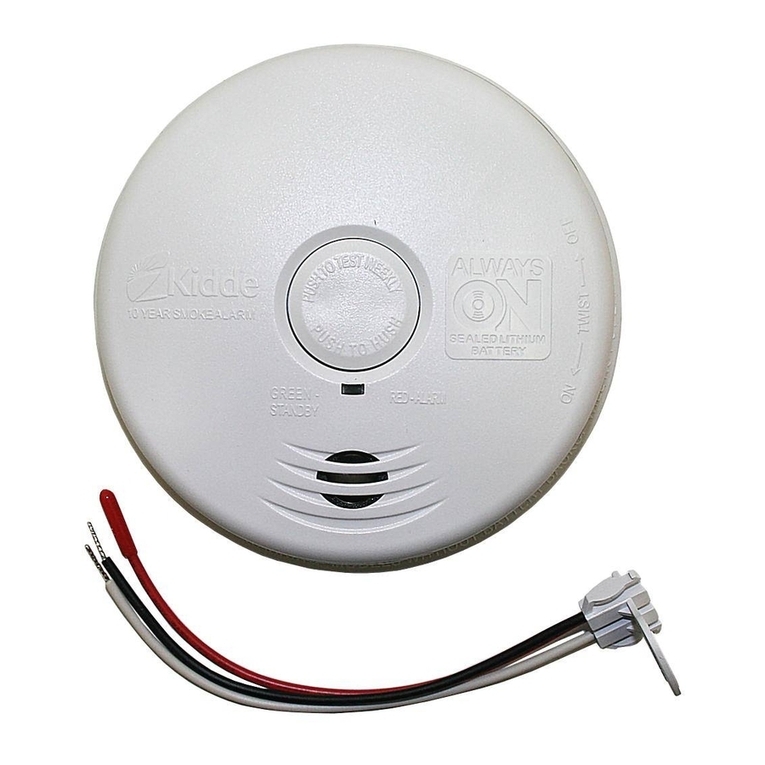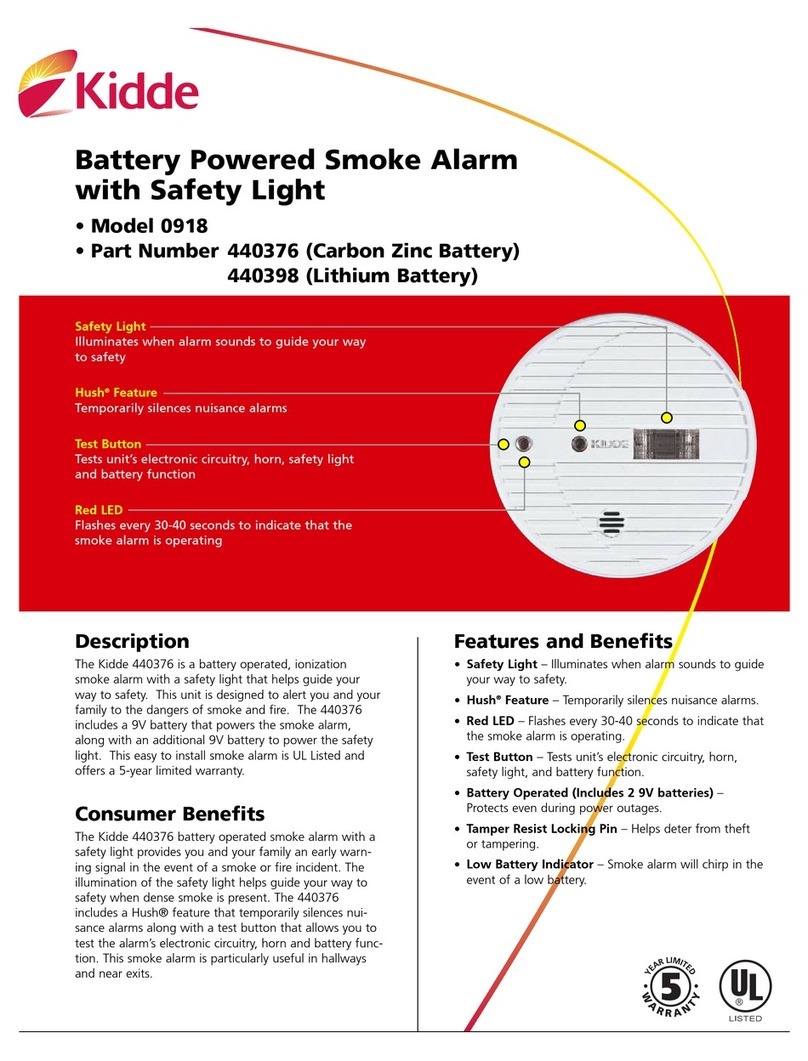
7
If you require further information please contact Product Support at 1-800-880-6788 or write us at:
Kidde, 1016 Corporate Park Drive, Mebane, NC 27302. Our internet address is www.kidde.com.
4. Introduction, Product Features And Specifications
Introduction
This alarm detects products of combustion using a multi-criteria optical sensor. Ten (10)
years after the unit was installed, this unit will automatically alert you that it is time to
replace the unit. This is called “End of Unit Life” mode. See Troubleshooting Guide.
To help identify the date to replace the unit, a label has been affixed to the side of the alarm.
Write the “Install date” in the space provided, and then write in the “Replace by” date (10
years from initial power up) in permanent marker on the label prior to installing the unit.
Product Features and Specifications:
•Temperature Operating Range: 40°F (4.4°C) to 100°F (37.8°C)
•Humidity Operating Range: up to 95% RH non-condensing
•Audible Alarm: 85+ dB at 10’, 3.0 to 3.5 KHz pulsing alarm
•Smoke Sensor: Multi-Criteria Optical
•Smoke Alarm SMART HUSH® Control
•Powered by a 3V DC non-replaceable sealed lithium battery.
Trouble
Condition
Visual
Indications Audible Indications Action
Low
Battery
Amber LED
blinks every
30 sec.
Chirp every 60 sec. * Push button once to silence for 24 hrs.
(Push button again to clear Hush and
perform a test.)
Note: 7 days after Low Battery begins, the
chirps cannot be silenced.
* Remove, discharge, dispose unit, and
replace as soon as possible.
Photo Fault Amber LED
blinks 4 times
every 30 sec.
Chirp every 30 sec. * See Cleaning Your Alarm section.
* Push button once to attempt to reset
the unit.
* If error continues, remove, discharge, dis-
pose unit, and replace as soon as possible.
Memory
Fault
Amber LED
blinks 3 times
every 30 sec
Chirp every 30 sec. * Push button once to attempt to reset
the unit.
* If error continues, remove, discharge,
dispose unit, and replace as soon as
possible.
End of Unit
Life
Amber LED
blinks twice
every 30 sec.
Double chirp every
30 sec.
* Push button once to silence for 24 hrs.
(Push button again to clear Hush.)
Note: 7 days after End of Unit Life begins,
the chirps cannot be silenced.
* Remove, discharge, dispose unit, and
replace as soon as possible.
Stuck Button Amber LED
blinks every
4 sec.
Chirp every 4 sec. * Push button to dislodge it from being
stuck. If button cannot be unstuck,
remove, discharge, dispose unit, and
replace as soon as possible.
MCU Failure None Constant Tone. * Remove, discharge, dispose unit, and replace
as soon as possible.
